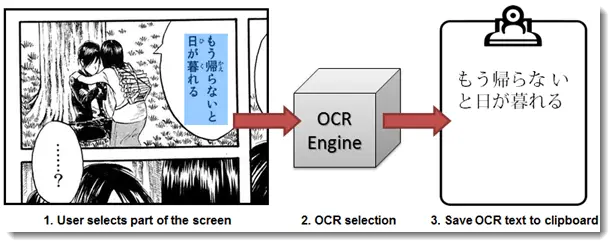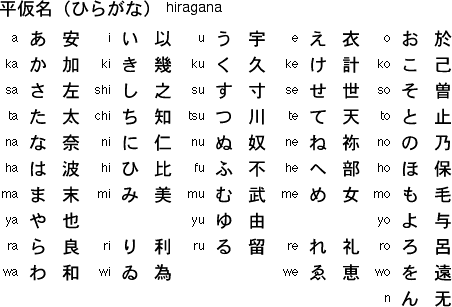

#JAPANESE OCR TRANSLATION SOFTWARE#
The development of the image translation service springs from the advances in OCR technology (miniaturization and reduction of memory resources consumed) enabling text scanning on mobile telephones.Īmong the first to announce mobile software capable of “reading” text using the mobile device's camera is International Wireless Inc. After getting acquired by Google, it was made a part of Google Translate mobile app.Īnother simultaneous advancement in Image Processing, has also made it possible now to replace the text on the image with the translated text and create a new image altogether. More and more applications emerged on this technology including Word Lens. Taking the text scanning facility one step further, image translation emerged, giving users the ability to capture text with their mobile phone's camera, extract the text, and have it translated in their own language. Presently, mobile devices having a camera resolution of 2 megapixels or above with an auto-focus ability, often feature the text scanner service. Using the handheld's camera one could take a picture of (a line of) text and have it extracted (digitalized) for further manipulation such as storing the information in their contacts list, as a web page address (URL) or text to use in an SMS/email message etc. The possibility to use one's mobile device's camera to capture and extract printed text is also known as mobile OCR and was first introduced in Japanese manufactured mobile telephones in 2004. The technical advancements in OCR made it possible to recognize text from images. for an English speaker or any speaker of a Latin-based language or vice versa. Manually entering the foreign text may prove to be a difficulty especially in cases where an unfamiliar alphabet is used from a script which user can't read, e.g. Machine translation made available on the internet (web and mobile) is a notable advance in multilingual communication eliminating the need for an intermediary translator/interpreter, translating foreign texts still poses a problem to the user as they cannot be expected to be able to type the foreign text they wish to translate and understand. This is done by applying optical character recognition (OCR) technology to an image to extract any text contained in the image, and then have this text translated into a language of their choice, and the applying digital image processing on the original image to get the translated image with a new language.

Image translation is the machine translation of images of printed text (posters, banners, menus, screenshots etc.).

JSTOR ( March 2019) ( Learn how and when to remove this template message).Unsourced material may be challenged and removed.įind sources: "Image translation" – news Please help improve this article by adding citations to reliable sources. Some systems are capable of reproducing formatted output that closely approximates the original page including images, columns, and other non-textual components.This article needs additional citations for verification. Advanced systems capable of producing a high degree of recognition accuracy for most fonts are now common, and with support for a variety of digital image file format inputs.

OCR is a field of research in pattern recognition, artificial intelligence and computer vision.Įarly versions needed to be trained with images of each character, and worked on one font at a time. Widely used as a form of data entry from printed paper data records – whether passport documents, invoices, bank statements, computerized receipts, business cards, mail, printouts of static-data, or any suitable documentation – it is a common method of digitizing printed texts so that they can be electronically edited, searched, stored more compactly, displayed on-line, and used in machine processes such as cognitive computing, machine translation, (extracted) text-to-speech, key data and text mining. Optical character recognition or optical character reader (OCR) is the electronic or mechanical conversion of images of typed, handwritten or printed text into machine-encoded text, whether from a scanned document, a photo of a document, a scene-photo (for example the text on signs and billboards in a landscape photo) or from subtitle text superimposed on an image (for example from a television broadcast).


 0 kommentar(er)
0 kommentar(er)
